The MET Marvels: 20 Iconic Pieces in the Heart of NYC
-
Navigating The Met: Handy Hints
- Take It Slow
- It'll Be Busy
- Understanding the Space
- Snap Away, But No Videos!
- The MET's most famous paintings
- Self-Portrait with a Straw Hat
- Washington Crossing the Delaware
- The Death of Socrates
- The Dance Class and Little Dancer
- Rembrandt Self Portrait
- Aristotle and a bust of Homer
- Study for a Sunday in La Grande Jatte
- Vermeer's paintings
- Temple of Dendur
- The Greek and Roman Sculpture Court
- Arms and Armor
- Ugolino & His Sons
- The French rooms at the Hotel de Varengeville
- Human-Headed Winged lion
- Lily Martin Spencer: Portraits
- Young Mother Sewing
- Garden at Sainte-Adresse
- The Deniability of Saint Peter
- Pablo Picasso's Portrait of Gertrude Stein
Living in New York City is great because I can go to top-notch museums anytime. I've been to the Met over 40 times this year, and there's still much more to see.
The Met Museum is the biggest in the US and ranks fifth globally. It's home to over 2 million art pieces that span 5,000 years. It's also the go-to museum in NYC, pulling in around 6 million people every year.
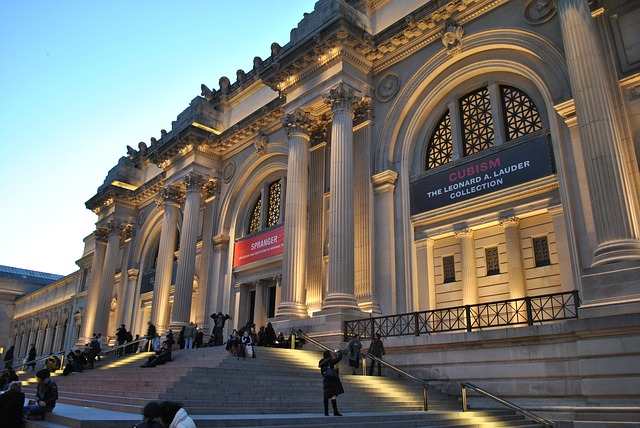
One visit won't cover it all, so pace yourself! Here are some key artworks you shouldn't miss at the Met.
Navigating The Met: Handy Hints
Take It Slow
The Met's huge, and you can't see it all in one go. Relax, check out the art, learn about the creators, and have fun. It's a cool spot to take a break from busy NYC.
It'll Be Busy
Remember the 6 million visitors I mentioned? Yeah, it gets crowded, especially if it's raining. A tip? Get there when it opens and have a plan in mind (use the list below for a start).
Understanding the Space
The Met has four levels and a rooftop with a killer NYC view. This handy map can help you find your way.
Snap Away, But No Videos!
You may photograph at the Metropolitan Museum, but no videos, please.

The MET's most famous paintings
When they visit the Met for the first time, some people make the mistake of assuming that the museum is made up of paintings. This isn't true! The Met has so much more to offer than just paintings. There are a variety of items, including vintage shoes, rare and fascinating books, Egyptian relics, and armor.
The Metropolitan Museum of Art has some amazing stuff you should check out.
Self-Portrait with a Straw Hat
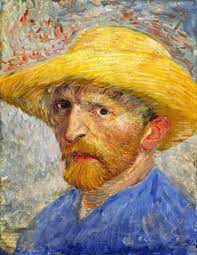
Self-portrait Of Vincent Van Gogh With A Straw Hat
As the crowds attest, Vincent van Gogh’s Self Portrait with a Straw Hat is easily one of The MET's most famous paintings. The vivid colors in the painting result from van Gogh’s Neo-Impressionist style and his mastery of color.
Van Gogh, a notoriously poor man, produced over twenty self-portraits while living in Paris. Why? The reason?
Enjoy this famous painting before moving to the opposite side. The Potato Peeler is a painting by van Gogh that was done as part of his studies on peasants. Unlike Self Portrait with Straw Hat, the Potato Peeler is dark and heavy and has a depressed feel.
You may wonder, "Why are there two paintings on one frame?" Van Gogh had to reuse frames because he was broke. Van Gogh was not appreciated during his lifetime, and he died poor. He would have been able to predict the fate of his work if he knew what would happen.
Washington Crossing the Delaware

"Washington Crossing The Delaware" 1851
Emanuel Leutze, a German-American painter of history, is best known for the 1851 painting Washington Crossing the Delaware. The massive painting dominates a room filled with breathtaking art.
The scene commemorates December 25-26, 1776, when General George Washington led the Continental Army across the Delaware River in the Revolutionary War.
It was the first surprise assault and victory over Hessian (German soldiers who served as auxiliary forces to the British Army). This was a major victory in the fight for American independence.
Leutze created three versions of the famous painting. A studio fire damaged the first version of this famous painting, and was then restored. However, it was destroyed completely during World War II during a bombing attack. The other two versions survived.
The Met houses one, and the Minnesota Marine Art Museum has another.
With its historical significance (and size), this epic painting is for obligatory view at The Met.
The Death of Socrates

Death Of Socrates
As with everything, it is easy to forget details. Here's a brief refresher on the story of Socrates:
Socrates was a revered philosopher who some loved and some hated. He taught those willing to hear but was later blamed for leading the young astray and challenging the gods.
They told him to either give up his beliefs or drink hemlock. Socrates picked up the hemlock and remarked, "no going back now."
The French artist Jacques Louis David beautifully painted the scene in his piece The Death of Socrates. The artwork was influenced by Plato's sad description of the event. In the painting, Socrates is about to drink the hemlock while his followers watch in sorrow.
The Dance Class and Little Dancer
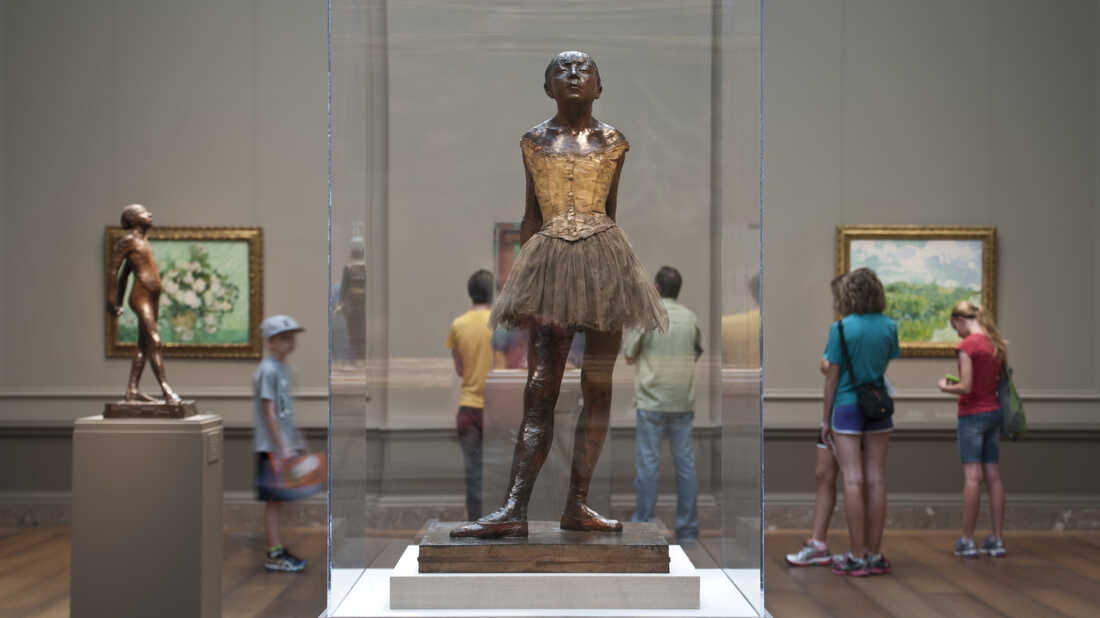
This painting is a favorite at The Met. It's so lifelike that it might be misinterpreted as a photo. The lighting in the piece is also impressive. You might recognize The Dance Class from your textbooks. This renowned painting at The Met shows young dancers and their moms waiting for one dancer's test. The teacher is observing.
The dancers are from the old Paris Opera, destroyed before this painting was finished. This artwork and its partner piece in the Musee d'Orsay are among Edgar Degas's most impressive ballet-related works.
Besides being a talented painter, Degas was also a skilled sculptor. Nearby The Dance Class, there's a beautiful statue called Little Dancer Aged Fourteen. The statue's face is really expressive.
Rembrandt Self Portrait

It's probably safe to say Rembrandt doesn't need an introduction. Even those who don't have a lot of knowledge about art, like myself, are familiar with this world-class Dutch artist. He is a master of portraits and spent much of his life perfecting self-portraits.
The Met is fortunate to own one of Rembrandt’s self-portraits. The famous Met painting dates back to 1660 when Rembrandt, then 54, was a young artist. The wrinkled eyebrows and sorrowful eyes reveal the artist's maturity and reflect his mental state at the time.
It's fascinating that Rembrandt chose not to romanticize or narcissistically portray his aging features but instead was honest. It is my favorite painting at the Met, and I think it's a must-see.
Aristotle and a bust of Homer
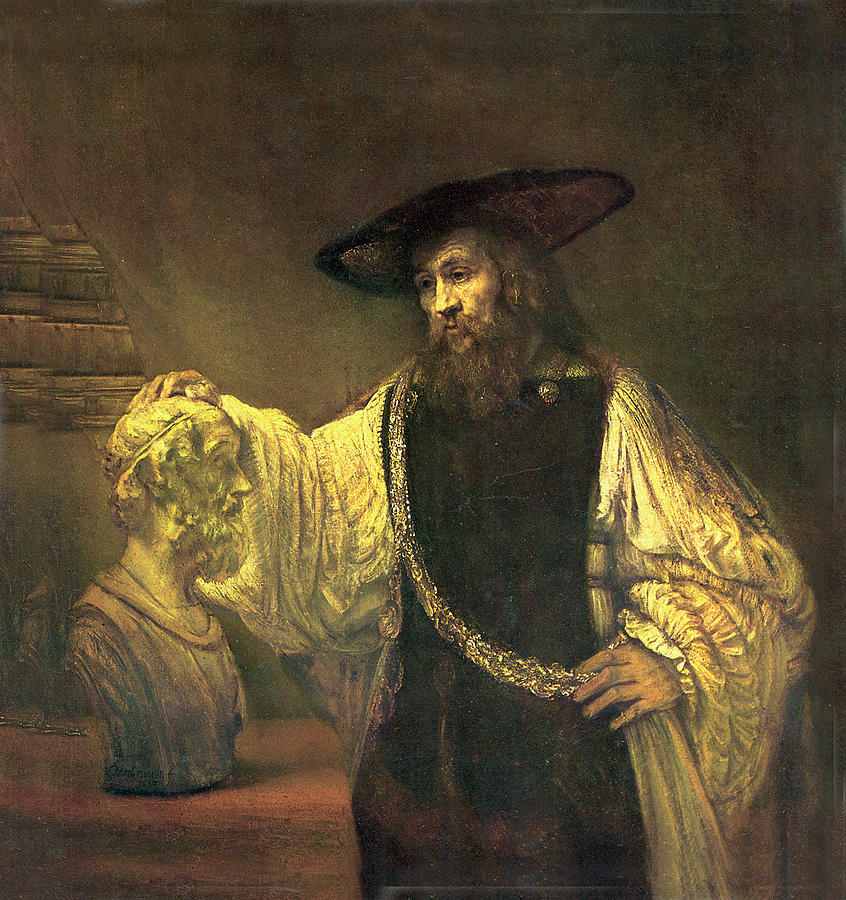
Aristotle With a Bust of Homer, another Rembrandt masterpiece, is a must-see at The Met. It's only a few steps from Rembrandt's Self Portrait, making a great next stop.
The Metropolitan Museum of Art is home to this iconic painting, one of its most famous and celebrated paintings. It's a good reason for a visit.
Aristotle is shown resting his hand, pensive and contemplative, on the bust of Homer. Homer was a legendary poet who achieved literary immortality with his Iliad & Odyssey. Aristotle appears contemplative. This leads historians to believe that Rembrandt may have been meditating about his own place in history or the meaning of fame.
This large work is true to Rembrandt’s classic style, with thick strokes and deep shades. The details are stunning, and the facial expression conveys powerful emotions. You can't really expect less from Rembrandt.
Study for a Sunday in La Grande Jatte
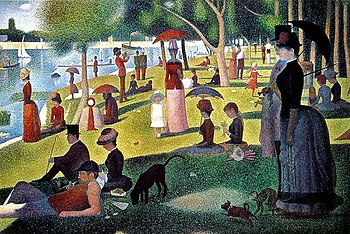
Georges Seurat is considered to have created his finest work with A Sunday on La Grande Jatte. The painting depicts Parisians relaxing along the Seine River. The technique is what makes this painting so unique. You will see that the entire painting is made up of tiny dots, which, when viewed at a distance, give the impression of blending into one.
Seurat invented this technique, which became known as Pointillism. (From the French word point or dot). Seurat preferred to call it Divisionism because he thought the technique was dividing colors into small dots that would blend when placed together.
This famous painting in The Met was a labor of love! The effort was worth it, as this painting is considered the most notable of the 19th Century. Van Gogh's Self Portrait in a Straw Hat is next to A Sunday on La Grande Jatte.
Seurat created the painting in several "trial runs". The Art Institute of Chicago is the official home of this masterpiece. A Sunday in La Grande Jatte painting is one of the most impressive things at the MET.
Vermeer's paintings
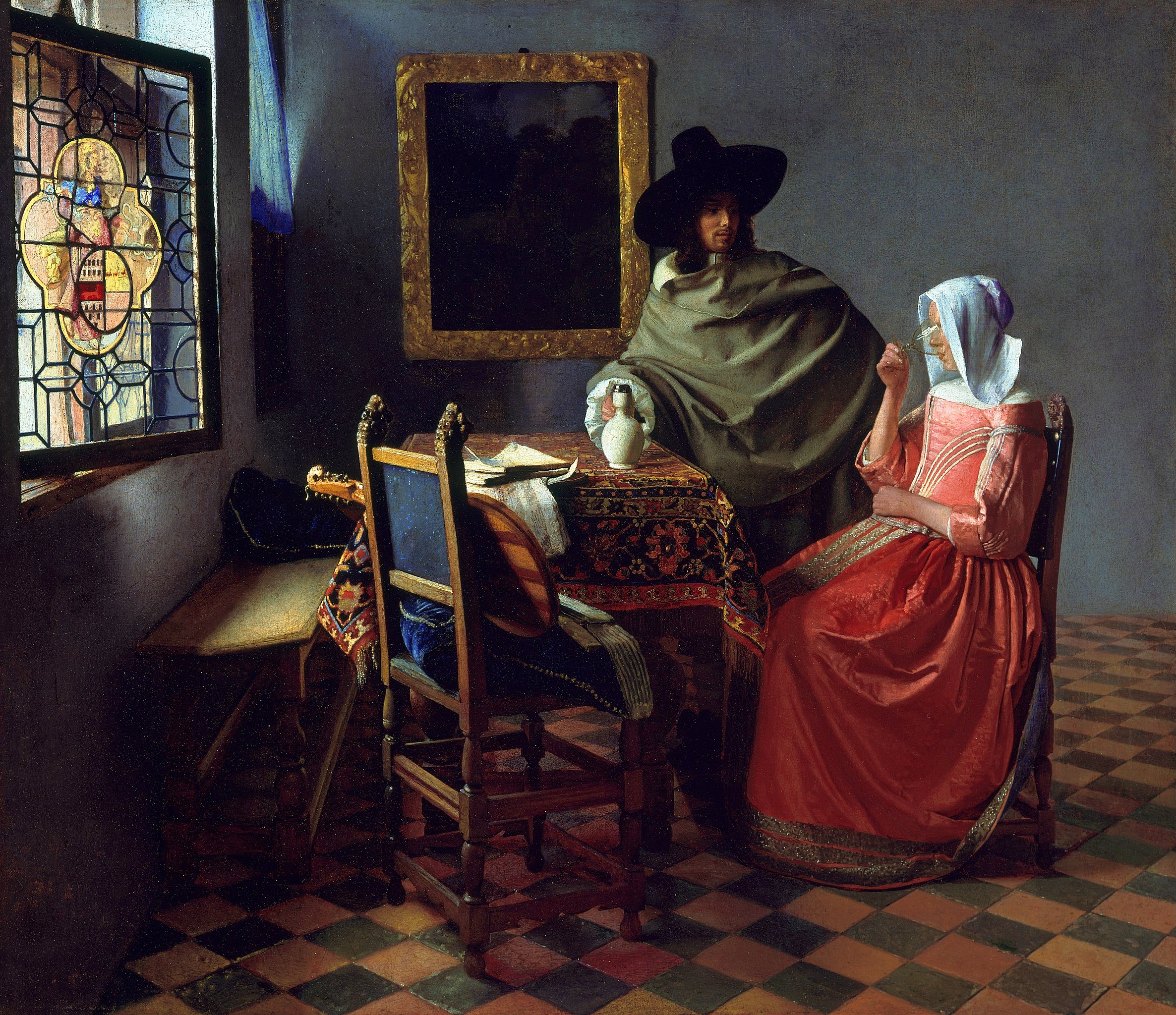
Vermeer's paintings were not known to the public during his lifetime. Only 34 of them are still in existence. Vermeer seems to have fallen into obscurity and was not appreciated until the late 19th century. There's now a renewed appreciation for Vermeer, and art lovers are making an effort to find his paintings.
The Met has five Vermeer works, which is the biggest collection. The five paintings are displayed together and require undivided focus. Vermeer is a master of light, and his daily scenes are incredibly lifelike.
After seeing the most famous works of art at the Met, let's look at other things you must see at the Met.
Temple of Dendur
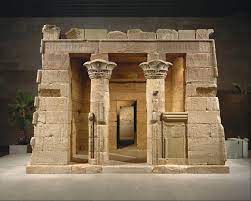
The Dendur Shrine at The Met is a top draw. Why? It's the only full Egyptian Shrine in this part of the world. It stood by the Nile River over 2 thousand years ago. However, a dam project put it at risk. Thus, people decided to move it to ensure its safety. Eventually, the entire shrine was moved to the USA.
The shrine rests in a special room. Next to it flows water, replicating the Nile's vibe. It's one of my best experiences at The Met.
The Greek and Roman Sculpture Court
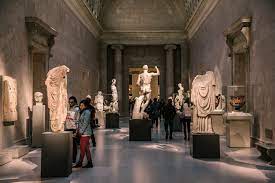
The section showcasing sculptures from Greece and Italy is remarkable. It holds over 30,000 pieces. Some of them were built in as early as 4500 B.C. It’s highly recommended to visit this part of The Met. It boasts of amazing artifacts that date back to A.D. 312.
Some key statues include:
-
A marble figure of an injured warrior
-
A marble pillar from the Temple of Artemis in Sardis
-
The Three Graces in Marble Stone
They are all very fascinating. You’ll definitely love them too.
Arms and Armor
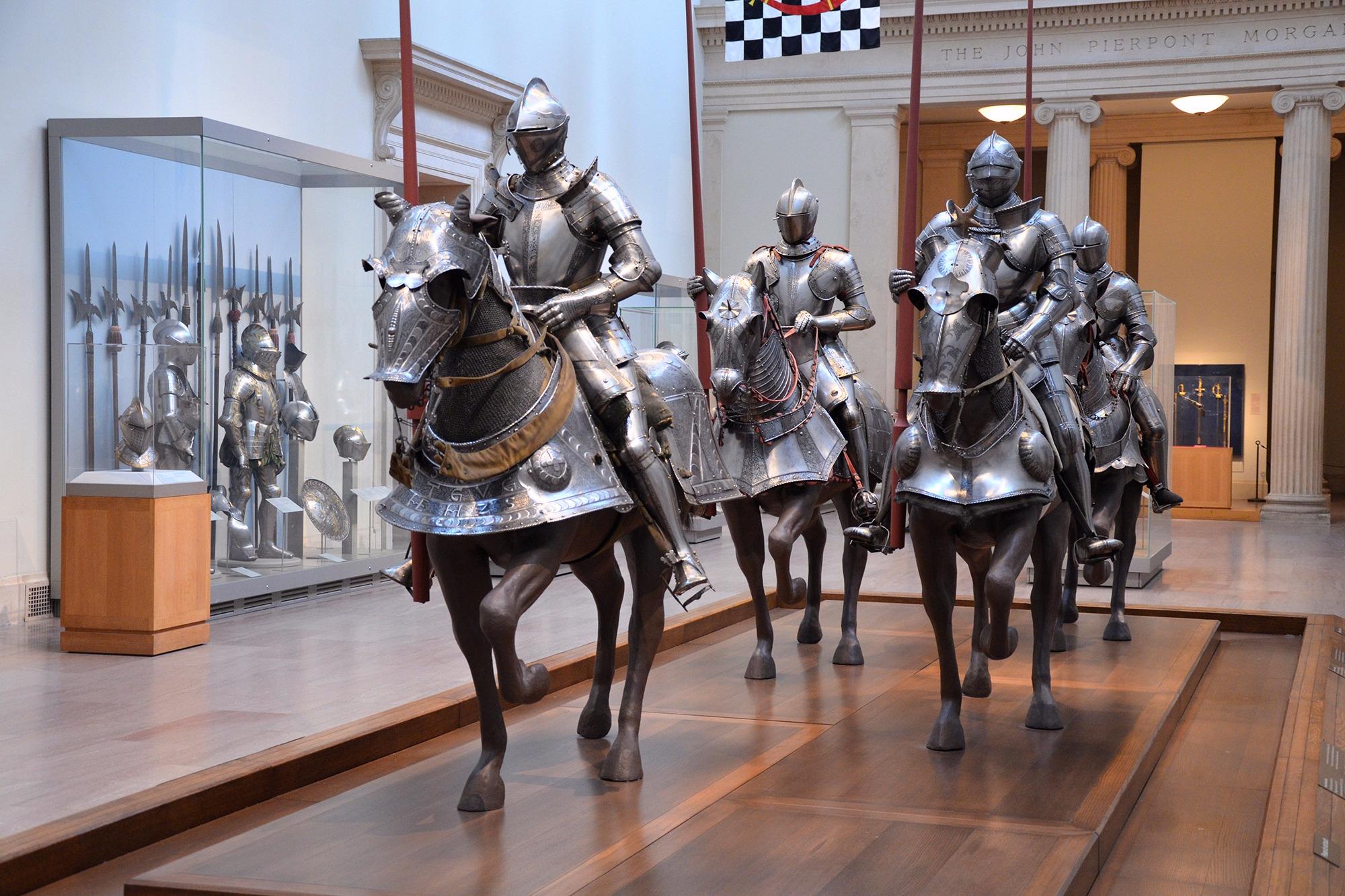
My husband enjoys Sunday mornings at the Metropolitan Museum's Arms and Armor section. When you see the armor, it feels like you've traveled back in time. It's really captivating.
The Arms and Armor team aims to keep alive the traditions of armor-making, gun crafting, and sword forging, as well as showcase and study them. We should remember that armor and weapons used to be symbols of pride. Creating them to wow royalty needed skill and showcased remarkable craftsmanship.
The details on the guns are amazing.
Ugolino & His Sons

The marble statue titled Ugolino & His Sons brings out deep feelings of hopelessness. Crafted by Jean-Baptiste Carpeaux, it draws inspiration from Dante's Inferno, highlighting the story of Ugolino, imprisoned in 1288. As a betrayer, he was doomed to face starvation in confinement alongside his sons and grandkids.
Though it's unclear if Ugolino resorted to cannibalism, some interpret the statue as depicting the moment he pondered the act. His eyes are filled with anguish as he stares into the distance, ignoring those who cling to him.
Carpeaux's portrayal of desperation is undoubtedly morbid. The artist's obsession with anatomical realism, inspired by Michelangelo, is difficult to ignore. Carpeaux's artistic career was launched by the expressive details in this famous artwork.
The French rooms at the Hotel de Varengeville

The reconstructed period rooms are one of the most impressive things at the Metropolitan Museum of Art. My favorite collection is the French rooms that were originally private residences during the 18th century in Paris. These rooms were situated in the opulent Hotel de Varengeville.
It is a stunning piece of art, and the detail is impressive. No matter how often I visit, I am always mesmerized by its beauty. This is a must-see, especially for Francophiles. It's one of The Met's most beautiful exhibits.
These rooms are also located next to Ugolino's sculpture and his sons, so it is a natural stop afterward.
Human-Headed Winged lion

These winged, human-headed lions with wings are also known as lamassu. They were guarding the palace of Ashurnasirpal I (r. 883-859 B.C.). Assyria. Assyrian palaces used lamassu to guard important doorways.
The statues are sculpted to have five legs, giving the illusion of walking from the side. However, they remain firmly standing when viewed directly.
Lily Martin Spencer: Portraits
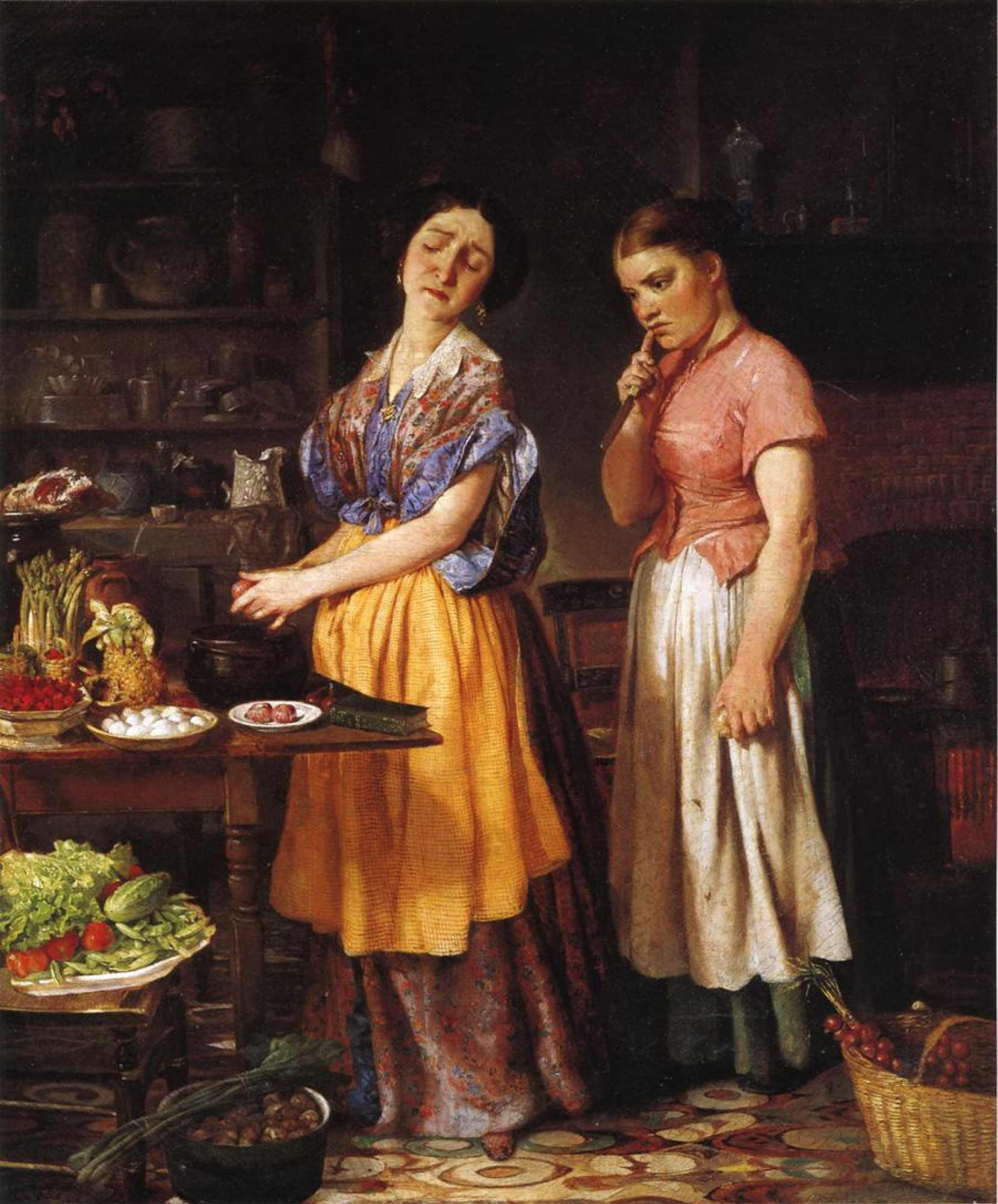
Spencer was an accomplished painter who captured the realities of male-female relations in a patriarchal culture. One of the most fascinating collections of Spencer's paintings is housed at The Met:
-
Young Husband: First Marketing
-
Young Wife: First Stew
The two paintings are displayed side by side at the Met and show the first years of marriage with a playful and humorous tone.
He is told to buy groceries at the store, which he's never done. He is embarrassed and draws the attention of amused bystanders.
The second portrait continues the story of the first portrait. The wife tries to make stew out of the jumbled mess brought by her spouse. The wife peels an onion in a grumpy manner while her confused helper watches.
Spencer tries to illustrate the social anxiety of the time - running a household effectively - and does it flawlessly.
In my opinion, these are some of the most beautiful works of art at the Metropolitan Museum of Art. Spencer was an accomplished painter, and these paintings were selected for their technical excellence when they were first shown in 1856.
Young Mother Sewing
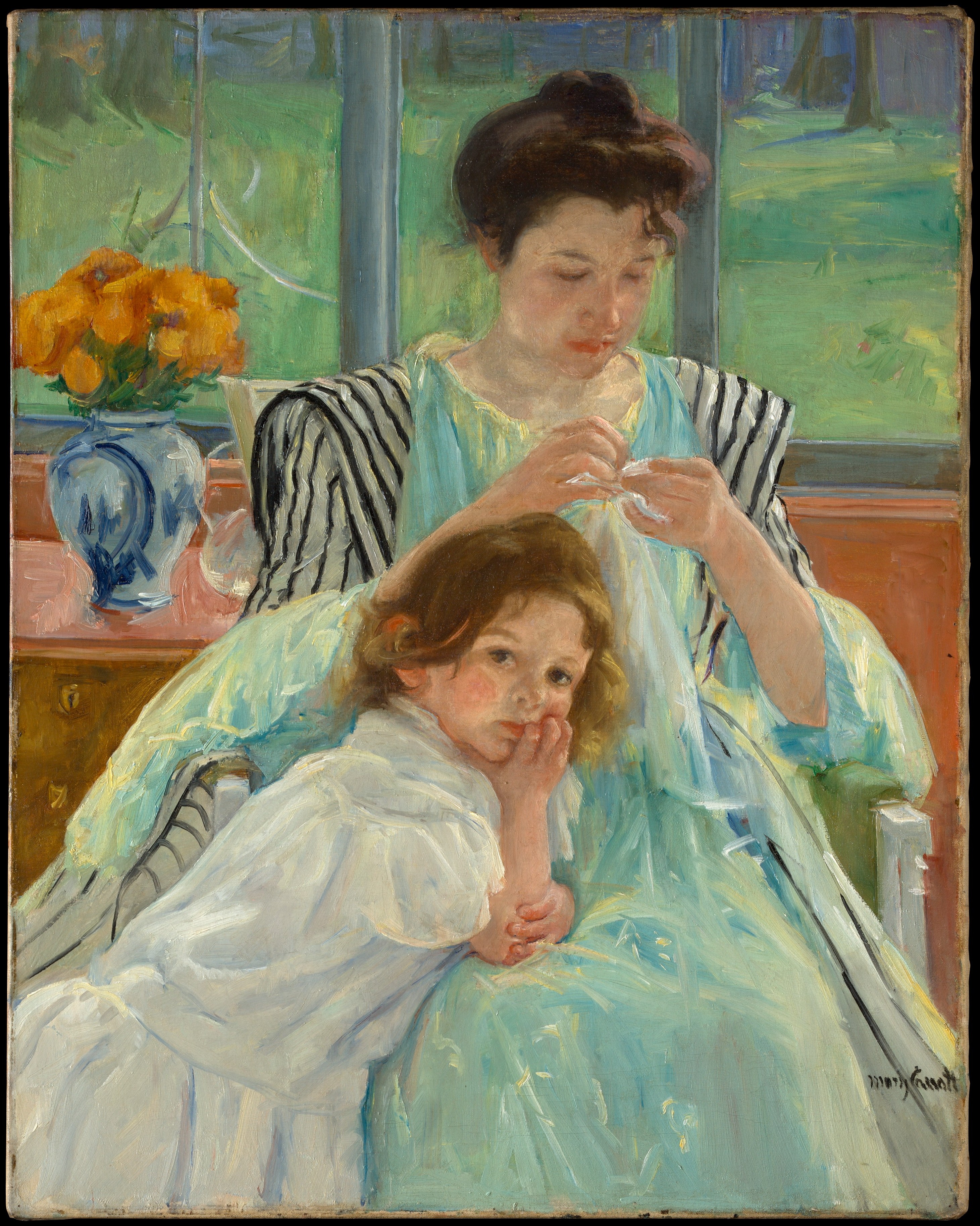
Mary Cassatt, an American artist, was a friend of Edgar Degas and studied under him (The Dance Class & Little Dancer). Cassatt focused on portraying domestic life, especially the relationship between mothers and their children.
The Met's Young Mother Sewing portrait is a must-see. The painting is vibrant, calm, and inviting. The calm gaze of the child pierces through the watcher while the mother is sewing unaffected.
Cassatt's ability to make mundane everyday tasks romantic is undeniable. Her ability to pause time and reflect on the value of childhood makes her work so unique.
Garden at Sainte-Adresse
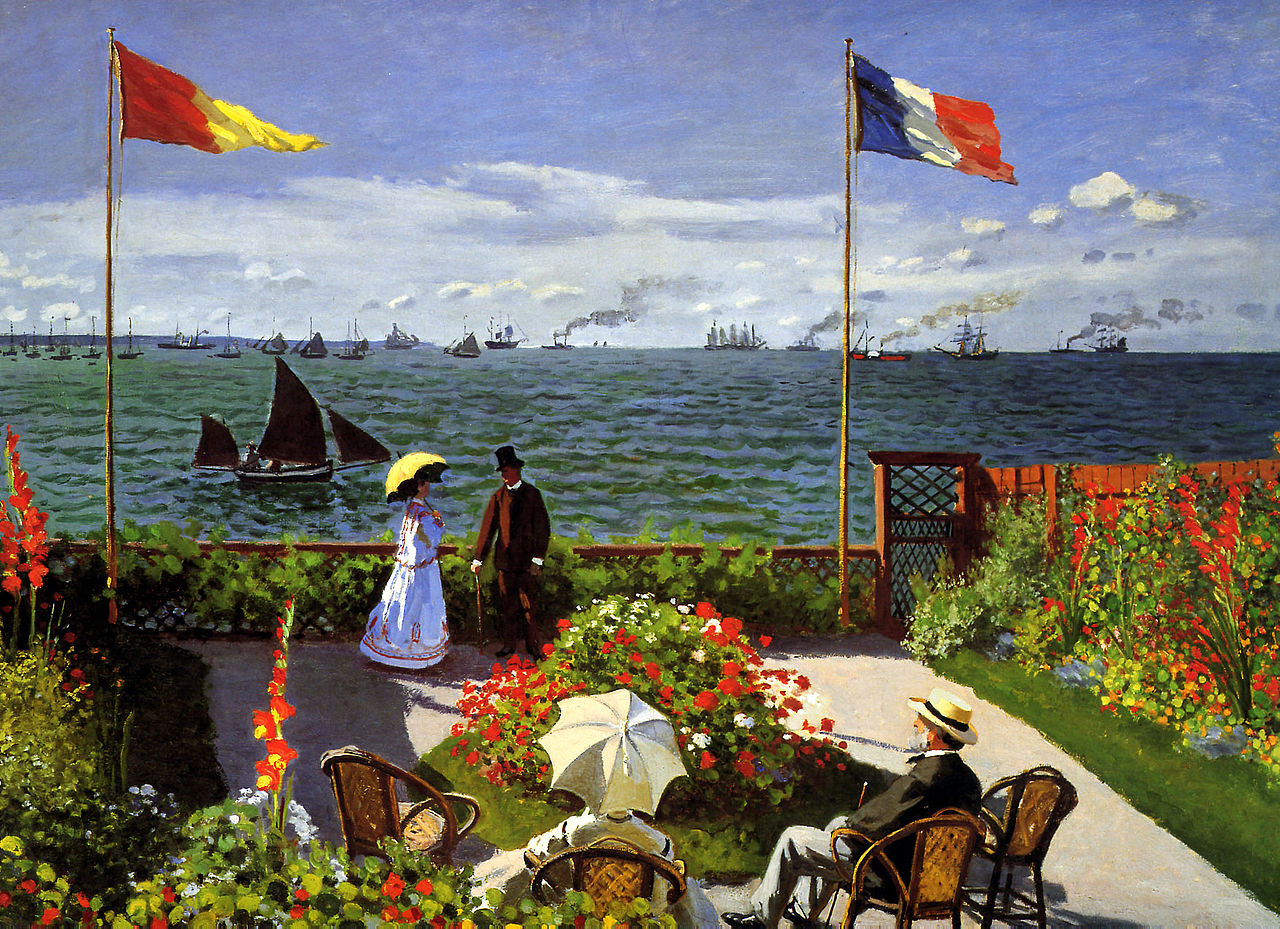
The Garden at Sainte-Adresse is my favorite Monet painting.
Monet and his family spent the summer of 1866-7 in the resort of Sainte-Addresse. Here, he painted this happy scene of French leisure using his family as models. Adolphe, his father, is wearing a panama.
This work separates from Monet's usual style and reflects his love of Japanese art. The scene is more vibrant, and the colors seem to be more intense than they actually were. Monet and his father had a tense relationship because he disproved Monet’s fiance. This beautiful painting from the Met would have you believe otherwise.
The Deniability of Saint Peter
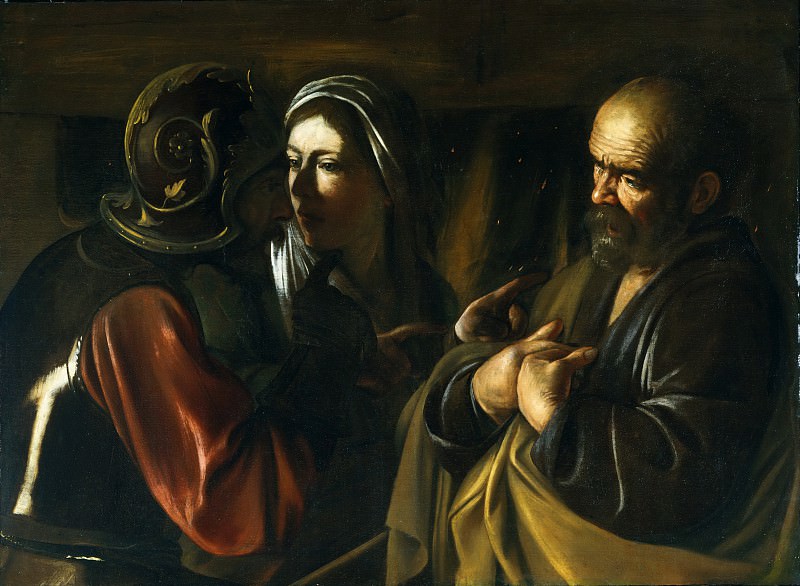
The narrative of Peter from the scriptures is filled with moments of deception and disloyalty. A well-known artwork by Caravaggio showcases Peter's rejection of Jesus, happening three times. Caravaggio's signature approach includes pronounced contrasts between darkness and illumination. This guides the viewer's gaze purposefully.
This artwork carries profound symbolism, igniting strong feelings. The trio of fingers gesturing towards Peter signifies his disloyalty to Jesus. The painting appeals to both art enthusiasts and those with spiritual inclinations.
Pablo Picasso's Portrait of Gertrude Stein
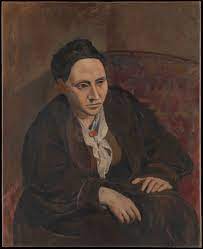
The renowned American writer and art aficionado, Gertrude Stein played a pivotal role in bringing European art to the U.S. Her Parisian residence often welcomed famed European creators like Picasso, Renoir, and Matisse.
Many believe Stein's support boosted Picasso's recognition, especially since she invested in three of his artworks during his financially challenging times. Picasso's portrayal of her is heartfelt, revealing his deep admiration.
Two aspects make Stein's likeness special: it marked one of Picasso's concluding works from his Rose Phase before transitioning to Cubism. Additionally, the artwork remained with Stein until her passing. Initially placed in the Museum of Modern Art, it later found its home at The Met, where it's celebrated as a standout piece.
No Comments Yet...